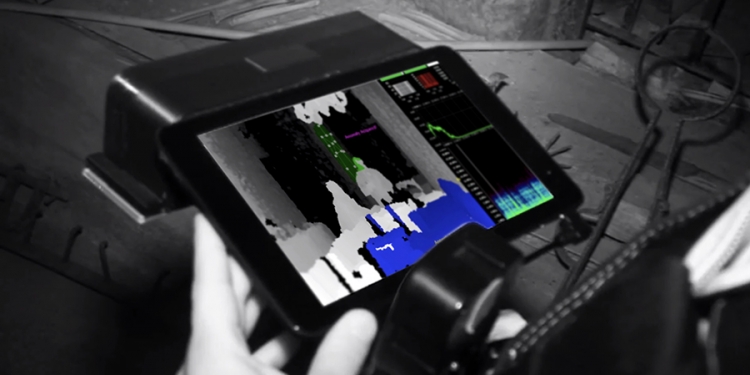

This page is more than five years old and was last updated in February 2024.
Kinect SLS Cameras are becoming more and more popular with paranormal investigators, having been featured on various ghost hunting shows, but what are these devices, how do they work and can they really see something the eye can't?
How Do SLS Cameras Work?
The camera works by projecting its own invisible infrared laser grid over a wide field of view. The grid is made up of over one million tiny dots. This structured grid of laser dots is what gives the device its name SLS, or Structured Light Sensor. The camera's sensor is able to calculate the distance between these infrared dots in order to build a three dimensional model of its view.
This 3D model doesn't rely on visible light and colours, instead it "sees" a physical representation of the space and objects around it. This means that if something moves within its field of view there will be a change in the distance between the dots, which the camera recognises as movement.
The reason this technology is used by ghost hunters is that the camera's software has the ability to recognise and highlight human figures in the images it captures. The software "sees" people by detecting limbs and movement.
Everything the camera sees is displayed in real time on a screen, usually a connected tablet, and any figures it detects are highlighted by overlaying a bright green stickman, which is why the device is sometimes called an SLS Stickman Camera.
Some think that this "skeletal movement tracking" is not only able to recognise human forms, but also detect human-shaped paranormal entities that are invisible to the naked eye. The technology is appealing to paranormal investigators as the video evidence captured can be recorded directly to the camera or a memory card.
Another plus point for paranormal investigators is that SLS Cameras work in total darkness as well as full day light.
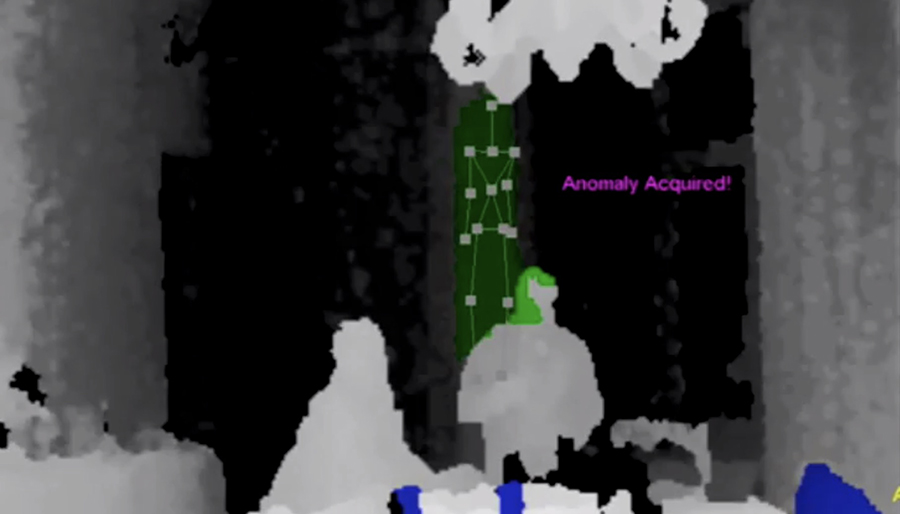
Like a lot of ghost hunting gadgets, SLS Kinect Cameras are based on technology which was primarily built for another purpose. Their main component is a Microsoft Kinect, a piece of hardware that adds motion control to the Xbox 360 and later Xbox One.
The Kinect sensor is modified which enables it to run off of a battery pack to make the device portable and is adapted to connect to a tablet, usually one running Windows 10 with the Kinect SLS software installed.
It is normally the, now out of production, first generation Kinect sensors that are used to make SLS cameras, those that were compatible with Xbox 360. Some more advanced devices use the second generation sensors that have the added ability to be able to detect body heat, changes in facial expression and measure heart rates - of course none of these upgrades are particularly useful in the spirit world.
The Kinect was originally designed to allow players to use motion controls to navigate through their console's menus and interact with Kinect compatible games such as 'Kinect Adventures', 'Fighters Uncaged', 'Forza Motorsport 4' and 'Just Dance 2018'.
Advertisement ‐ Content Continues Below.
Why Do Ghost Hunters Use SLS Cameras?
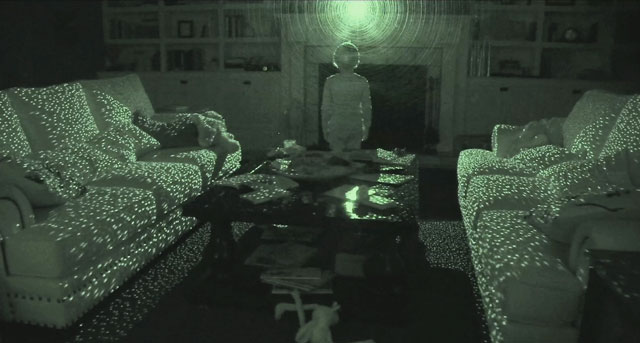
It's hard to know at exactly what point the Microsoft Kinect crossed over from console peripheral to ghost hunting gadget, but it's most likely due to the inclusion of footage captured using an Xbox Kinect in the 2012 movie 'Paranormal Activity 4'. In the movie one of the characters combines a Kinect with an infrared night vision camera, this reveals the shape of a young boy, a ghost which was invisible to those in the room.
'Paranormal Activity 4' were on to something when they used this ghost spotting mechanic in the movie, in fact they weren't the first to realise that a Microsoft Kinect can spot things that aren't there.
Of course the Kinect was originally designed to spot a human body and track them in great detail, but ever since the release of the Kinect motion sensor controllers in 2010, gamers have found that the device sometimes "saw" figures at random, behind them or in their house when there was no one there with them.
When the Kinect spots a new figure in your room, it alerts the player, which can obviously be quite unnerving if you're alone. Most players have dismissed these extra invisible players as nothing more than a software glitch, but a quick YouTube search shows that many gamers have uploaded videos of these "Kinect ghosts", which sometimes are even able to control the console via movement.
While most have dismissed the phenomenon as a glitch, ghost hunters saw this as an opportunity in their quest to see something which is invisible to the eye.
Probably the person to credit for turning the gaming gadget into a ghost hunting tool was Bill Chappel, an inventor and paranormal investigator known for creating ghost hunting devices for the Travel Channel show, 'Ghost Adventures' starring Zak Bagans.
Since then the device has grown in popularity and has been used by Barri Ghai on the British ghost hunting show, 'Help! My House Is Haunted' as well as by countless other paranormal teams around the world.
Of course everyone has their own methods of investigation, and no one will ever agree on them all, but the problem with SLS Cameras for ghost hunting is that they are designed to do something else. Its original task is very specific and the device itself isn't foolproof. Many gamers experience motion controls failing while playing games from time to time. Sometimes it fails to detect players in the room, other times it misidentifies something else as a player.
The software is looking for a human form, it expects to see one or more players in its field of view. This is why gamers found that the camera would spot bodies that weren't there. In fact, as you can see in the example above, sometimes the software even fails to spot bodies that are present, but despite this it has been able to detect what appears to be a small ghost.
Paranormal investigators use this technology in the hopes that they'll see a stickman, but that is literally all the device is designed to do... draw a stickman over anything even remotely human shaped and track its movement. However, the movement of the stick figures of ghosts that the camera draws are often very erratic. They twitch and dance around. They're often not in scale with their surroundings, making them look too small, too big or as if they're floating in the air. They even spontaneously change position.
As ghost hunters normally use handheld SLS Cameras, you'll notice that when the camera moves considerably the figure it's detected vanishes, this is because with a change of angle whatever the software is mistaking for a human no longer looks like a human. That's the reason why the stick figures are always erratic, contorted or in strange positions.
Walking around with the camera will almost certainly give you false positives because the grid of invisible dots that camera uses to "see" will be constantly moving and distorting, plus the camera only has an intended range of about three meters, so anything beyond that is probably a false positive.
The biggest problem with this sort of device is that the is no basis to think that it can detect spirits. Another popular ghost hunting gadget is an EMF meter which detects changes in the electromagnetic field, paranormal investigators believe that ghost can affect these devices. Whether a ghost produces or affect electromagnetic flux or not, an EMF meter is primarily designed to measure changes in the EM field and we can test this by creating an EM field or simply moving the device towards something that generates them.
An EMF meter is just one of a whole array of ghost hunting gadgets that are much more credible because they all use a sensor that relies on some testable physical thing to trigger them.
However, SLS Cameras aren't triggered by something physical or testable. The software is designed to see humans which are visible and physical, so there is no way to validate that it can also see an invisible object or spirit because we can't generate one like we can with a test EM field.
The software's algorithms have been trained by developers to detect people standing in front of the camera. The device doesn't have algorithms included in the software to detect ghosts, nobody has or is able to train the algorithms in this way.
Plus, how do we even know that energy, ghosts or spirits take human form in the afterlife? After all, there are plenty of stories of dark shadows, ghostly mists and orbs of light. An SLS Camera wouldn't be able to see these forms of manifestation anyway, making it quite an ineffective device if it can't see some types of paranormal entities.
Even the companies which sell modified Kinetic cameras for ghost hunting do so with the disclaimer, "we do not guarantee that the stick figures the Kinect SLS Camera produce are of paranormal nature. It is up to the user to determine whether readings are showing intelligent patterns that can be suspected to be of paranormal nature."
A Personal Experience
I recently went on a public ghost hunting event at Ettington Park Hotel in Stratford-Upon-Avon. At one point in the evening the team hosting the night used an SLS camera.
The flaws with this type of camera became really obvious when one of the team were stood next to an old disused fireplace while another member of the team pointed the camera at her. The camera was unable to correctly identify the solid human figure in front of it. Instead of drawing a stick figure it drew an abstract mess of lines over the upper half of her body. Every now and again a leg would appear which shot out to the corner of the room before instantly vanishing again.
Next a shape showed up next to the living human. It glitched and jumped around, spontaneously changed shaped, and suddenly disappeared and reappeared. At times it looked like a stickman, but most of the time it was just an indistinguishable mess of lines on the floor.
In my opinion this was a false positive, flawed evidence, but based on its shape, most of the group thought that the shape seen on the floor was a non-human elemental spirit crawling across the carpet. Even if you accept that the camera is able to see something on the floor in front of it, to jump to the conclusion that is showing a non-human entity crawling on the floor is a stretch too far. Remember that the camera wasn't even showing a living person as a human-shape, so how can anyone trust that the shape on the floor is accurate?
The best case was that there was a human spirit next to the living person and both were being incorrectly represented by the camera. However, the most likely explanation is that the camera isn't able to identify a solid human correctly and is therefore misidentifying other things in the room.
Do SLS Cameras Have The Ability To See Ghosts?
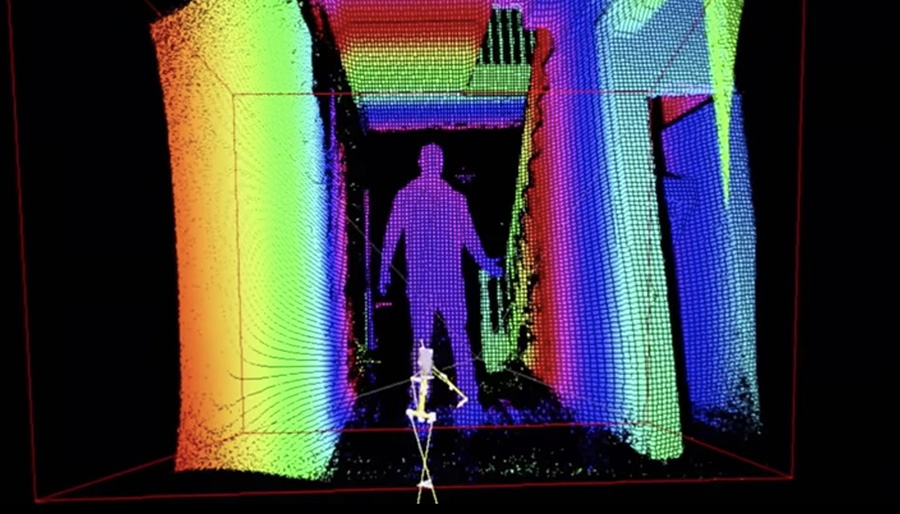
Can SLS Kinetic cameras really see ghosts?
Tips For Catching Evidence Of The Paranormal Using SLS
To get the most out of an SLS Camera and the best way to get proof that they can really see spirits, there are a couple of things you can try.
Firstly, don't move the camera. Mount it on a tripod or place it on a flat surface and leave it. This will decrease the likelihood of getting false positives. However if a solid and stable stick figure appears, after a while move the camera to another static location. If there really is a ghost present in front of the camera then changing the camera's field of view shouldn't affect its ability to see it.
Secondly, look for intelligent behaviour. If the device detects an anomaly which is squashed, distorted or erratic, then it is probably a glitch. However, if the figure is seen as a solid stick figure that interacts with its surroundings, then this is much more compelling evidence. In this case you should test the spirit further by asking it to move in specific ways, such as walking across the room or sitting down. If the figure on the screen follows your instructions then this is great evidence.
Further Reading
Dive into the world of the paranormal and unexplained with books by Higgypop creator and writer Steve Higgins.

Investigating The Unexplained
Practical advice on conducting paranormal investigations and uncovering the unexplained.
Buy Now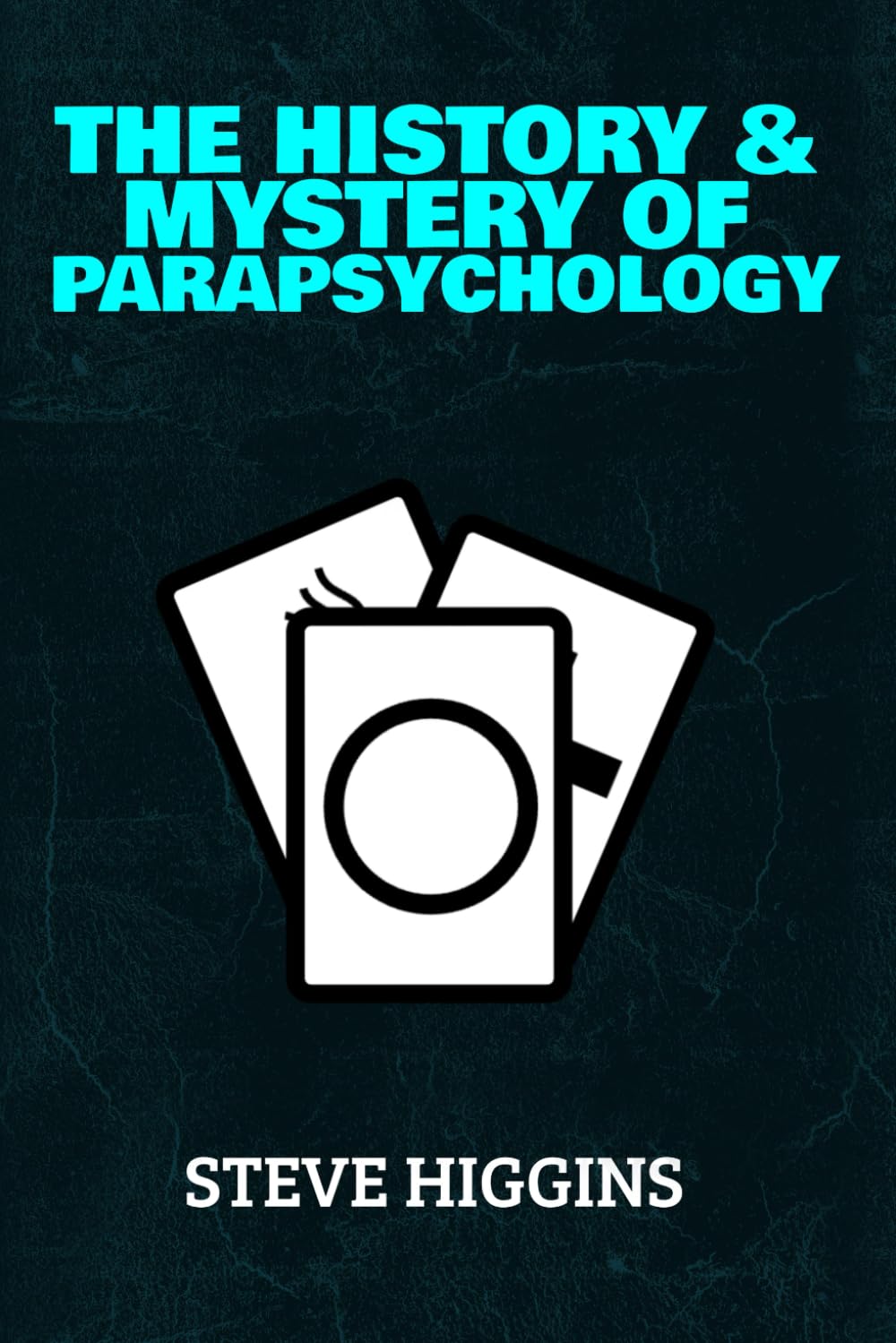
The History & Mystery Of Parapsychology
A deep dive into paranormal phenomena, exploring history, science, and psychology.
Buy NowMore Like This
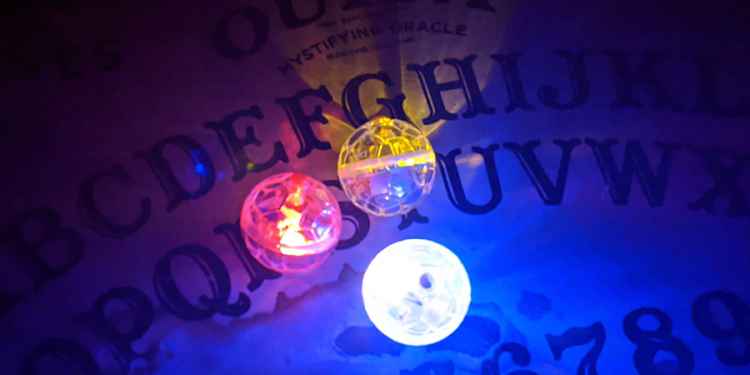
Ghost HuntingJanuary 26, 2025
These Are The Ghost Hunting Gadgets You Should Avoid If You Want To Be Taken Seriously As An Investigator
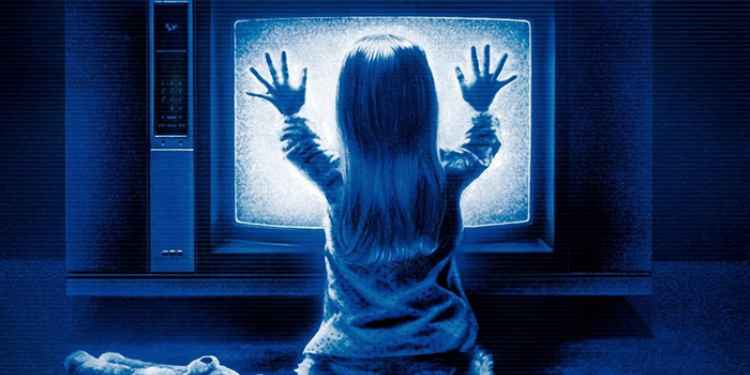
GamesDecember 09, 2024
Poltergeist Quiz
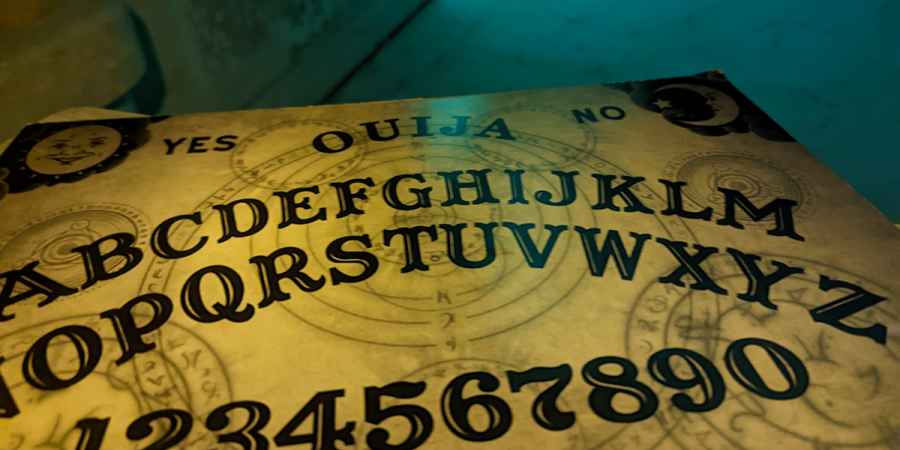
GamesDecember 08, 2024
Ouija Board Trivia Challenge
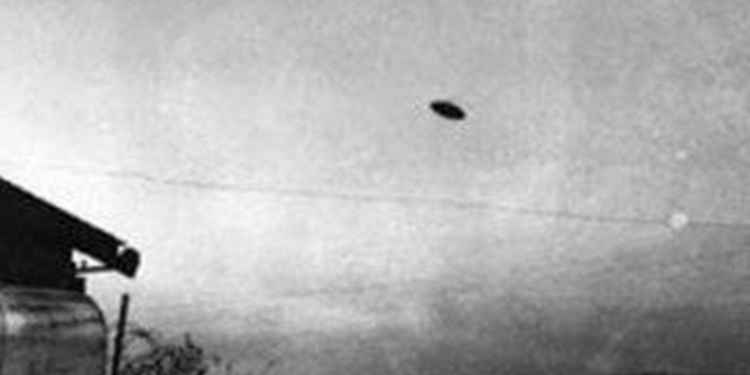
GamesDecember 04, 2024
Fakes, Hoaxes & Debunked Paranormal Claims Quiz
 See More on Audible
See More on Audible
Comments
Want To Join The Conversation?
Sign in or create an account to leave a comment.
Sign In
Create Account
Account Settings
Be the first to comment.